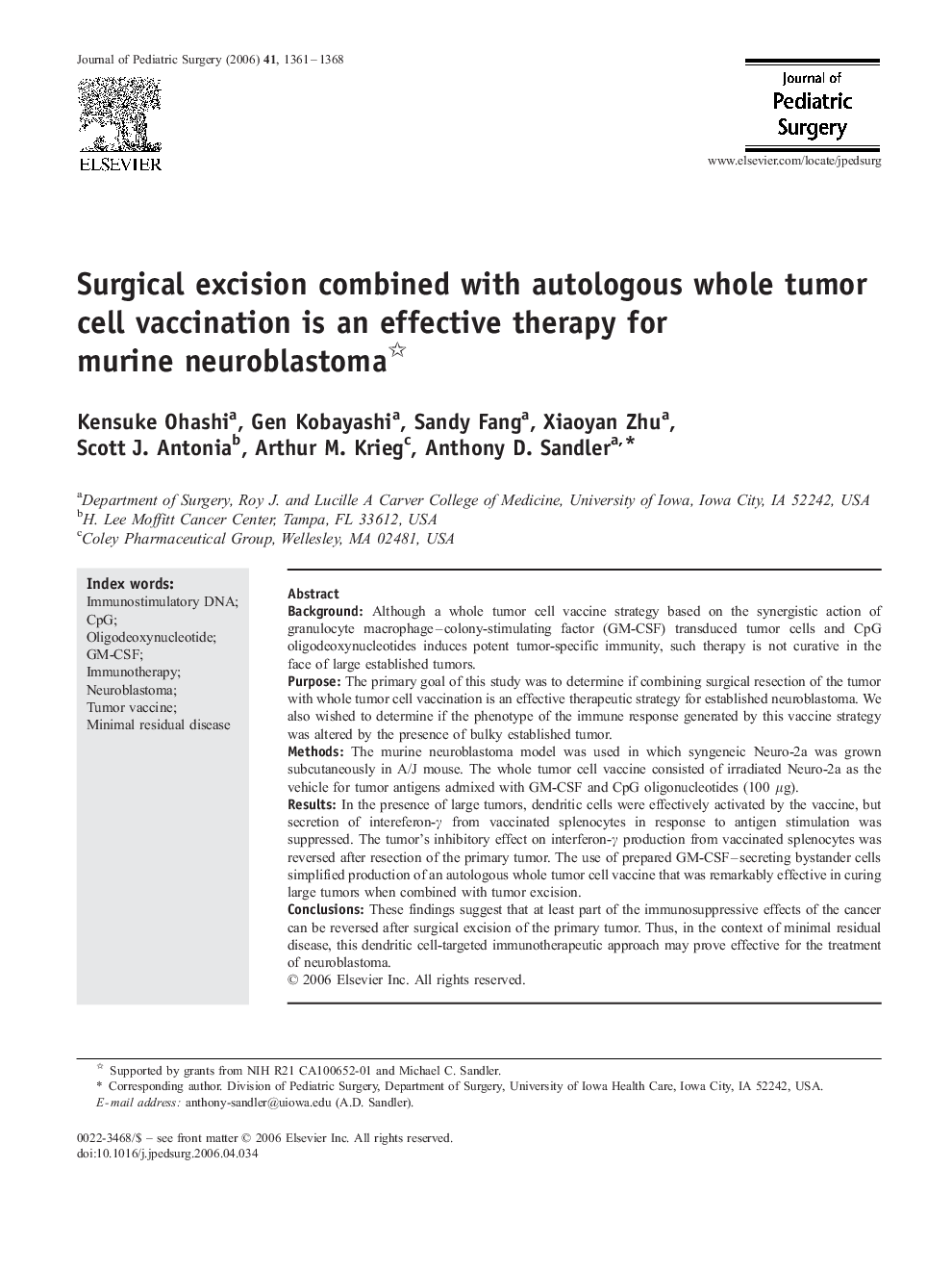| Article ID | Journal | Published Year | Pages | File Type |
|---|---|---|---|---|
| 4159944 | Journal of Pediatric Surgery | 2006 | 8 Pages |
BackgroundAlthough a whole tumor cell vaccine strategy based on the synergistic action of granulocyte macrophage–colony-stimulating factor (GM-CSF) transduced tumor cells and CpG oligodeoxynucleotides induces potent tumor-specific immunity, such therapy is not curative in the face of large established tumors.PurposeThe primary goal of this study was to determine if combining surgical resection of the tumor with whole tumor cell vaccination is an effective therapeutic strategy for established neuroblastoma. We also wished to determine if the phenotype of the immune response generated by this vaccine strategy was altered by the presence of bulky established tumor.MethodsThe murine neuroblastoma model was used in which syngeneic Neuro-2a was grown subcutaneously in A/J mouse. The whole tumor cell vaccine consisted of irradiated Neuro-2a as the vehicle for tumor antigens admixed with GM-CSF and CpG oligonucleotides (100 μg).ResultsIn the presence of large tumors, dendritic cells were effectively activated by the vaccine, but secretion of intereferon-γ from vaccinated splenocytes in response to antigen stimulation was suppressed. The tumor's inhibitory effect on interferon-γ production from vaccinated splenocytes was reversed after resection of the primary tumor. The use of prepared GM-CSF–secreting bystander cells simplified production of an autologous whole tumor cell vaccine that was remarkably effective in curing large tumors when combined with tumor excision.ConclusionsThese findings suggest that at least part of the immunosuppressive effects of the cancer can be reversed after surgical excision of the primary tumor. Thus, in the context of minimal residual disease, this dendritic cell-targeted immunotherapeutic approach may prove effective for the treatment of neuroblastoma.
